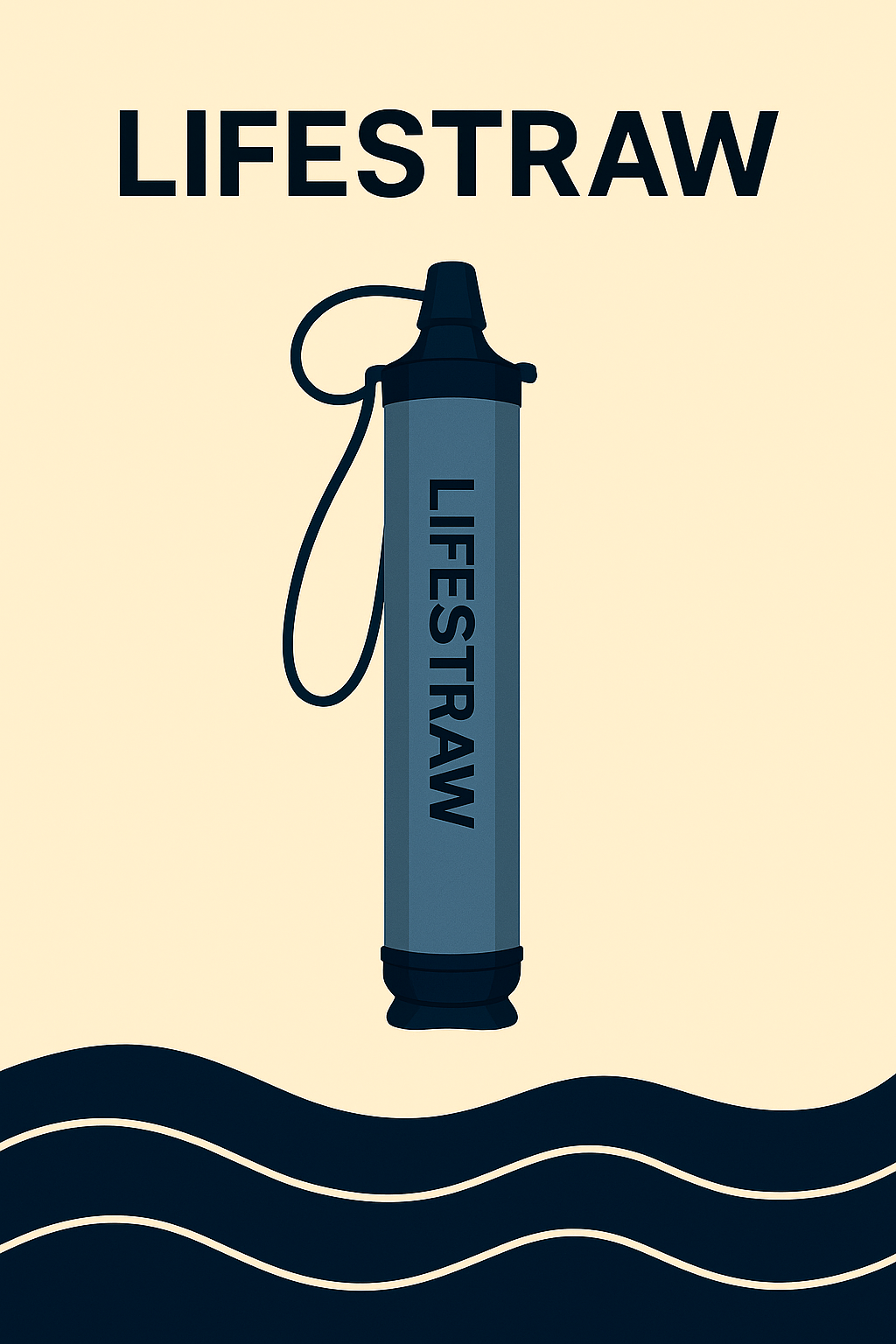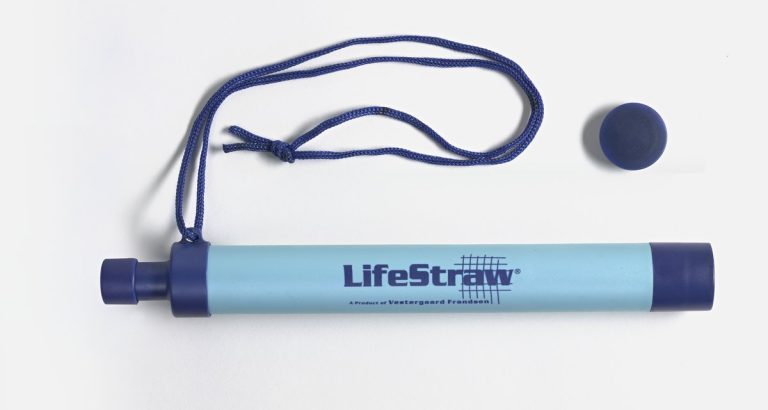
Newsletter Subscribe
Enter your email address below and subscribe to our newsletter

Enter your email address below and subscribe to our newsletter



The Reality: Clean water access becomes critically challenging during emergencies—whether you’re traveling, displaced, or facing limitations that make traditional prep impossible.
The Innovation: LifeStraws filter 99.999999% of waterborne bacteria and 99.999% of waterborne parasites from many natural water sources.
The Accessibility Factor: Lightweight, requires no training, works immediately.
The Bottom Line: Emergency preparedness that sidesteps the barriers built into conventional advice.
The standard emergency preparedness advice sounds simple: “store one gallon per person per day.” But this assumes you have several things that aren’t always available:
What happens when those assumptions don’t match your reality? Whether you’re dealing with a temporary situation or facing long-term challenges, you need solutions that work regardless of your circumstances.
More than 2.2 million Americans currently live without basic access to safe drinking water and sanitation, according to ongoing research by DigDeep and the US Water Alliance. During emergencies, these numbers spike dramatically as infrastructure fails and supply chains break down.
Originally developed for humanitarian crises, LifeStraws have evolved into consumer emergency tools. The basic model is essentially a sophisticated straw that filters water as you drink. No pumping, no waiting, no batteries.
How it works:
What it removes:
What it doesn’t remove:
Important safety note: LifeStraws should not be used with obviously polluted water, industrial runoff, or water that appears contaminated with chemicals or oil. They’re designed for natural freshwater sources and municipal water that may contain biological contaminants.
When you’re exploring outdoors: Hiking, camping, backpacking, or any outdoor adventure becomes safer and more flexible when you can access clean water from natural sources.
When you’re away from home: Natural disasters don’t wait for convenient timing. A LifeStraw in your car, office, or travel bag means you can access safe water from streams, lakes, or questionable taps.
When infrastructure fails: Power outages, water main breaks, or contamination warnings can leave entire communities without safe water. A LifeStraw works regardless of what’s happening with municipal systems.
When storage isn’t an option: Living in small spaces, temporary housing, or situations where you can’t stockpile supplies doesn’t mean you can’t prepare.
When budgets are tight: At around $20, a LifeStraw costs less than a case of bottled water but filters up to 1,000 gallons.
Two Essential Components Working Together
55+ gallon containers for immediate family needs
Ready water when utilities fail
Large volumes for all household uses
2-4 weeks of drinking water for 4 people
Setup investment + rotation maintenance
2 oz portable protection anywhere
Turns questionable water into safe drinking water
Water security when you can’t stay home
1,000 gallons (5+ years) filtering capacity
One-time purchase, no maintenance
[Visual infographic showing the two-component approach would be inserted here]
Traditional emergency water solutions often assume capabilities, storage space, and resources that create barriers for many people. A complete water preparedness strategy recognizes that both stored water and portable filtration serve different critical needs – and together they provide comprehensive security.
Traditional Storage: Your Foundation
Large-scale water storage handles the immediate, high-volume needs when infrastructure fails. This covers cooking, cleaning, and drinking water for your household during the critical first days of an emergency.
Portable Filtration: Your Safety Net
Portable water filtration breaks down the traditional barriers:
Stored water gives you immediate access when the tap stops working – no hunting for water sources, no questions about safety. It’s your reliable foundation for the first critical days.
Portable filtration extends your preparedness beyond what you can store. It turns questionable water into safe drinking water, provides security during evacuation, and offers long-term peace of mind when stored supplies run low.
The most effective approach combines both:
This isn’t about choosing one over the other – it’s about creating a complete system that works whether you’re sheltering in place or on the move, whether the emergency lasts days or weeks.
During Hurricane Dorian’s aftermath in the Bahamas, portable water filters became critical when traditional water systems failed. Relief organizations distributed LifeStraws alongside food aid, particularly to families who had lost their homes and had no way to store traditional emergency water supplies.
The devices allowed people to access water from available sources while maintaining independence during the recovery process—a crucial factor when traditional support systems were overwhelmed.
LifeStraws work best as part of a broader emergency plan, but they’re designed to be useful even when planning falls short.
For your personal preparedness:
For your family:
While LifeStraws can benefit anyone, they’re particularly valuable for people whose circumstances make traditional emergency prep challenging or impossible:
For people experiencing homelessness: A LifeStraw makes nearly any freshwater source potentially safe. It fits in a backpack, doesn’t require refrigeration, and doesn’t need to be replaced regularly.
For people with disabilities: During power outages or evacuation scenarios, a LifeStraw offers independence. It requires minimal physical strength, no electricity, and no assistance to use.
For families in transition: Whether in temporary housing, staying with relatives, or moving frequently, a LifeStraw provides water security without requiring storage space or ongoing costs.
For people on fixed incomes: The one-time cost provides long-term security without the ongoing expense of bottled water or the upfront investment in bulk emergency supplies.
For caregivers and support staff: Simple enough for anyone to use, reliable enough to recommend confidently, and effective for people with various needs and abilities.
LifeStraws don’t just clean water—they remove barriers to safety. In a world where emergency preparedness advice often assumes stable housing, adequate storage, and disposable income, tools that work regardless of circumstances become essential.
That accessibility matters when traditional emergency services are overwhelmed, when conventional advice doesn’t fit your situation, or when you’re helping others who face different challenges than your own.
The LifeStraw’s success signals a shift toward inclusive, practical preparedness. As water-related crises grow more common due to climate change and aging infrastructure, we need tools that work for everyone.
For individuals:
For communities:
For service providers:
Preparedness shouldn’t require perfect circumstances, stable housing, or ideal resources. Tools like LifeStraw make clean water access practical for anyone—whether you’re at home, traveling, in temporary housing, or helping others prepare.
A $20 straw might not seem radical, but when it offers security without barriers, it becomes more than emergency equipment. It becomes a practical form of dignity and independence.
Disclosure: This article is not sponsored by LifeStraw or any water filter manufacturer. Resource Story has no financial relationship with any companies mentioned.
About Resource Story: We bridge the gap between complex systems and practical solutions for families, professionals, and communities. Our focus is on approaches that work within real-world constraints, not perfect circumstances.